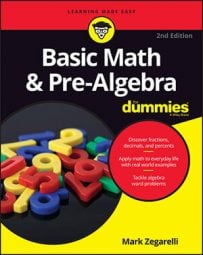Sometimes people confuse numbers and digits. The number system you're most familiar with — Hindu-Arabic numbers — has ten familiar digits: 0, 1, 2, 3, 4, 5, 6, 7, 8, and 9. For the record, here's the difference:
A digit is a single numerical symbol, from 0 to 9.
A number is a string of one or more digits.
For example, 7 is both a digit and a number. In fact, it's a one-digit number. However, 15 is a string of two digits, so it's a number — a two-digit number. And 426 is a three-digit number. You get the idea.
In a sense, a digit is like a letter of the alphabet. By themselves, the uses of 26 letters, A through Z, are limited. (How much can you do with a single letter such as K or W?) Only when you begin using strings of letters as building blocks to spell words does the power of letters become apparent.
Similarly, the ten digits, 0 through 9, have limited usefulness until you begin building strings of digits — that is, numbers. Yet with only ten digits, you can express numbers as high as you care to go.

